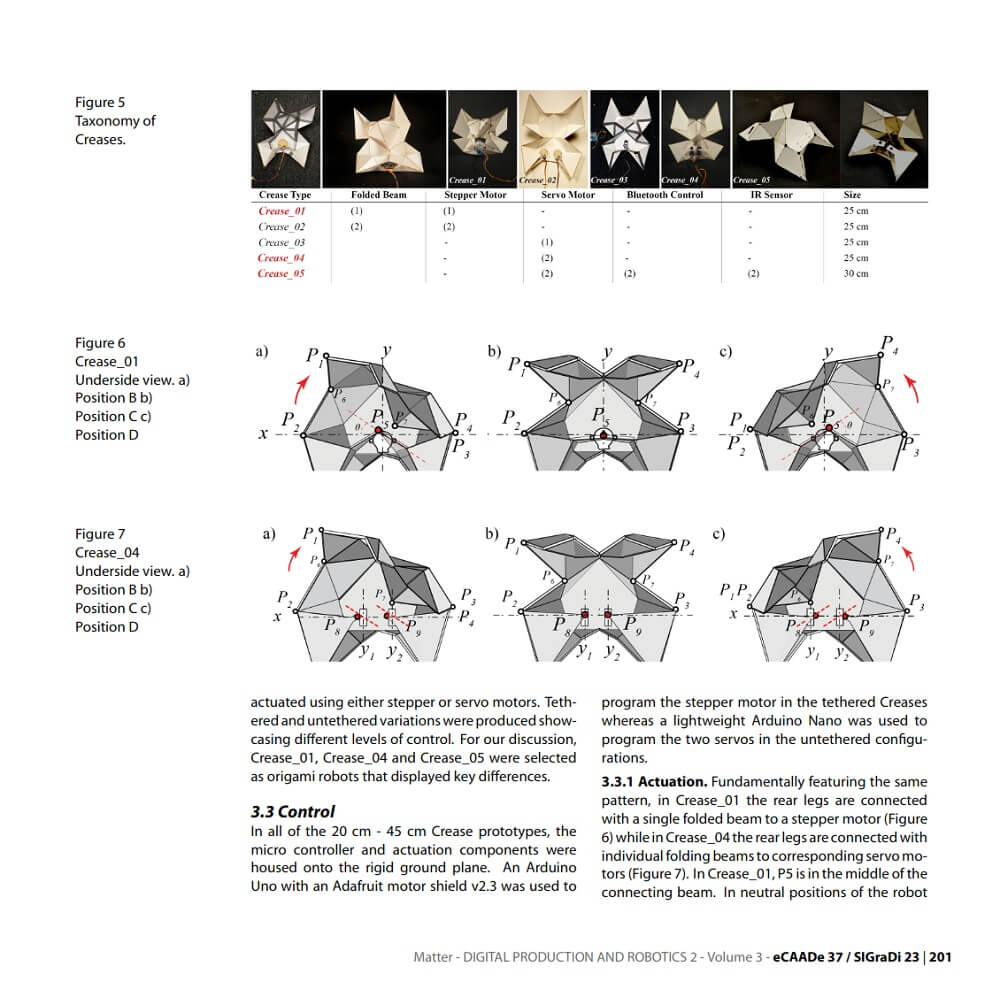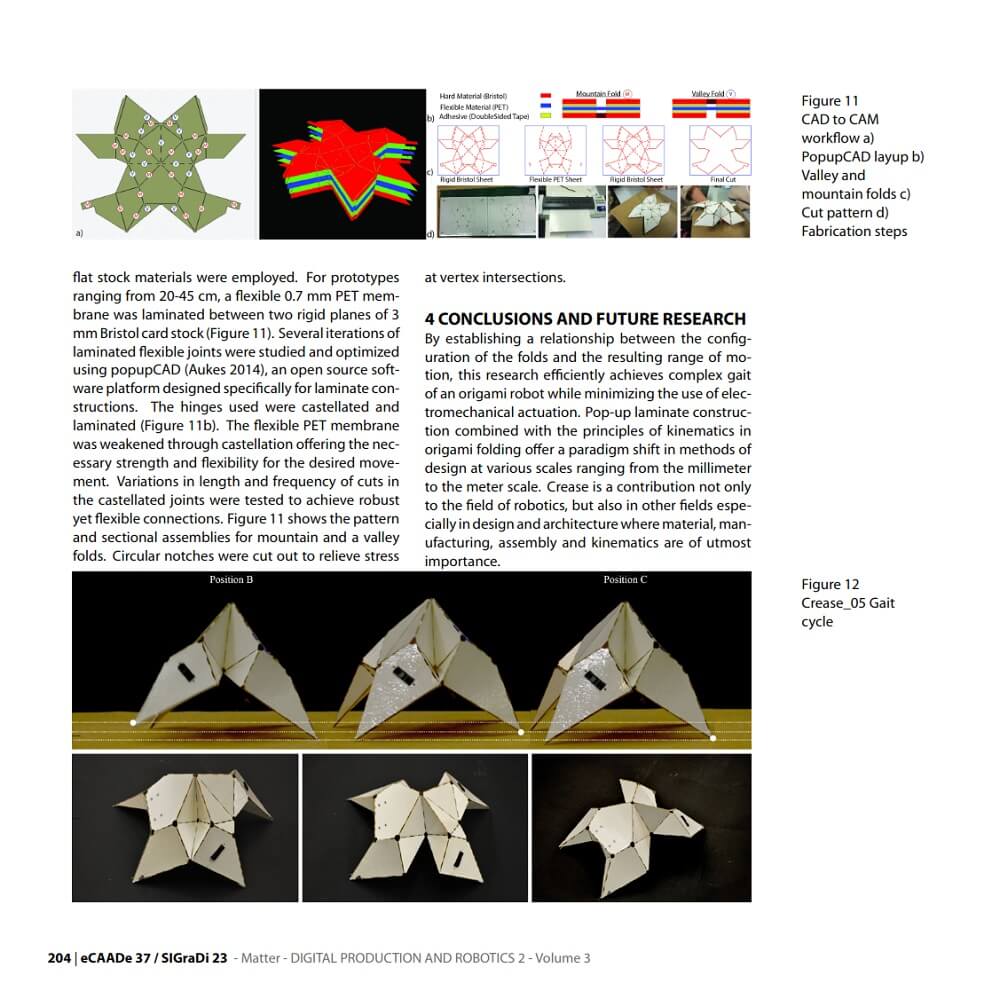Crease

Robotics have expanded exponentially in the last decade. Within the vast examples of ambulatory robots, traditional legged robots necessitate engineering expertise and the use of specialized fabrication technologies. Micro electromechanical (MEM) robots are useful for a wide range of applications yet in most cases, difficult to fabricate and excessively intricate. Advances in pop-up laminate construction have generated a model shift in the development of robot morphologies due to their ease of fabrication and scalability from the millimeter to centimeter scale. This research by Olga Mesa, Saurabh Mhatre, Malika Singh and Dan Aukes continues to investigate the link between kinematics and pop-up origami structures in robotics. The objective was to design a robot that exhibited efficient and controlled locomotion minimizing number of motors.

“Crease”, an origami robot that emerges from a two-dimensional sheet into its three-dimensional configuration was developed. By amplifying a simple rotational motion through the geometry of folds in the robot, a complex gait was achieved with minimal motorized actuation. Variations in gait, control, and steering were studied through physical and computational models. Untethered Creases that sense their environment and steer accordingly were developed. This research contributes not only to the field of robotics but also to design where efficiency, adjustability and ease of fabrication are critical.





























Comments